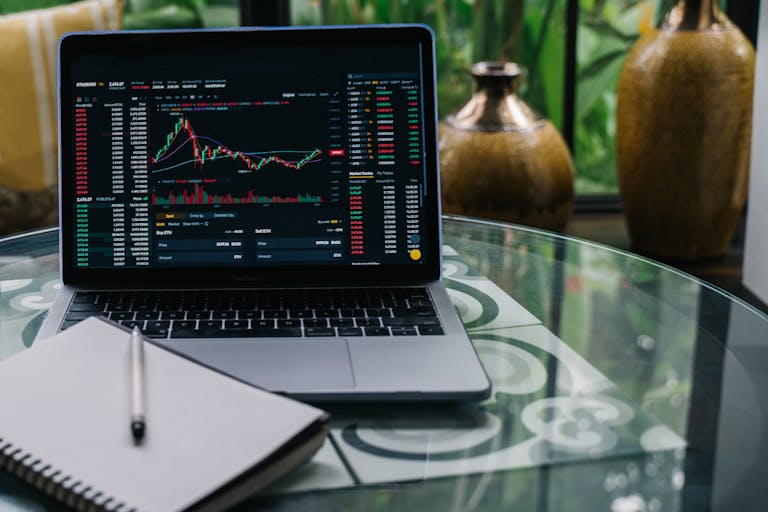Understanding Stop Limit and Sell Limit Orders
Understanding Stop Limit and Sell Limit Orders in Crypto Trading

In the world of cryptocurrency trading, understanding how to use stop limit orders and sell limit orders can give you a strategic advantage. These types of orders allow traders to manage their trades more effectively, minimizing risk while maximizing potential profits. In this article, we’ll break down the key differences between stop limit and sell limit orders and explain how to use them in your trading strategy.
What is a Sell Limit Order?
A sell limit order is an order placed by a trader to sell a specific amount of a cryptocurrency at or above a predetermined price. Essentially, you’re setting the minimum price at which you’re willing to sell. Sell limit orders are used when you believe that the price of a cryptocurrency will increase to a specific level, but you don’t want to sell below that price.
For example, if you own Bitcoin and want to sell when the price reaches $50,000, you would place a sell limit order at $50,000. Your order will only be filled when the market price reaches or exceeds your set price.
Why Use a Sell Limit Order?
- Control over your selling price: You set the minimum price at which you’re willing to sell.
- Automation: You don’t need to be online constantly. The order will be filled automatically when your price point is met.
- Profit-taking strategy: You can use sell limit orders to lock in profits when the price of an asset rises to your target level.
What is a Stop Limit Order?
A stop limit order combines the features of both stop orders and limit orders. It is an order placed to sell a cryptocurrency once it reaches a specific stop price. However, the order will only be executed at or above a specific limit price. The stop limit order allows you to control both the price at which you sell and the price at which your order will be triggered.
How a Stop Limit Order Works:
- Stop Price: This is the price at which you want the order to trigger. When the cryptocurrency price hits this stop price, the limit order becomes active.
- Limit Price: This is the minimum price at which you’re willing to sell. If the market price doesn’t reach this price, your order won’t be executed.
For example, let’s say you own Ethereum and want to sell it if the price starts to drop, but only if the price is above a certain threshold. You might set a stop price of $3,000 and a limit price of $2,900. If the price hits $3,000, a limit order is triggered, but the sale will only occur if the price is $2,900 or higher.
Why Use a Stop Limit Order?
- Protection against significant losses: Stop limit orders can help you minimize potential losses in a falling market by triggering a sale once a certain price is hit.
- Control over execution: You control the price at which your order will be executed after the stop price is reached.
- Automation with a safety net: Like sell limit orders, stop limit orders can execute automatically, but with the added benefit of limiting your potential losses.
Key Differences Between Stop Limit and Sell Limit Orders
Both stop limit orders and sell limit orders are used to manage trading positions, but they work in different ways. Here’s a breakdown of the key differences:
| Feature | Sell Limit Order | Stop Limit Order |
|---|---|---|
| Order Type | Order to sell at a specific price or higher | Order to sell once a price threshold is reached |
| Execution Trigger | Triggered immediately when the market hits the limit price | Triggered when the stop price is hit |
| Price Control | You set the price at which you want to sell | You set both stop and limit prices for more control |
| Use Case | Used when the market price is above a target level | Used to protect against losses or secure profits |
Example of Using Stop Limit vs. Sell Limit:
- Sell Limit Example: If Bitcoin is currently trading at $45,000 and you want to sell when it reaches $50,000, you place a sell limit order at $50,000.
- Stop Limit Example: If Ethereum is trading at $3,200 and you want to protect yourself from a sharp drop, you place a stop limit order with a stop price of $3,000 and a limit price of $2,900.
Conclusion: Mastering Stop Limit and Sell Limit Orders
Understanding stop limit orders and sell limit orders is essential for any cryptocurrency trader looking to manage risk and take profits at the right moment. While sell limit orders are great for locking in profits when the market price reaches a certain level, stop limit orders provide a safety net by protecting you from major losses if the market moves against you.
By using both types of orders strategically, you can automate your trades, reduce your emotional reactions to market fluctuations, and have more control over your trading decisions.
Key Takeaways:
- Sell Limit Orders: Set a price to sell your crypto at or above a target price to lock in profits.
- Stop Limit Orders: Protect against losses by triggering a sell order once the market hits a stop price, but only execute at or above a limit price.
- Use Both for Effective Risk Management: Combining these orders helps you automate trades and protect profits.
Start using stop limit and sell limit orders today to enhance your cryptocurrency trading strategy and manage risk more effectively!




